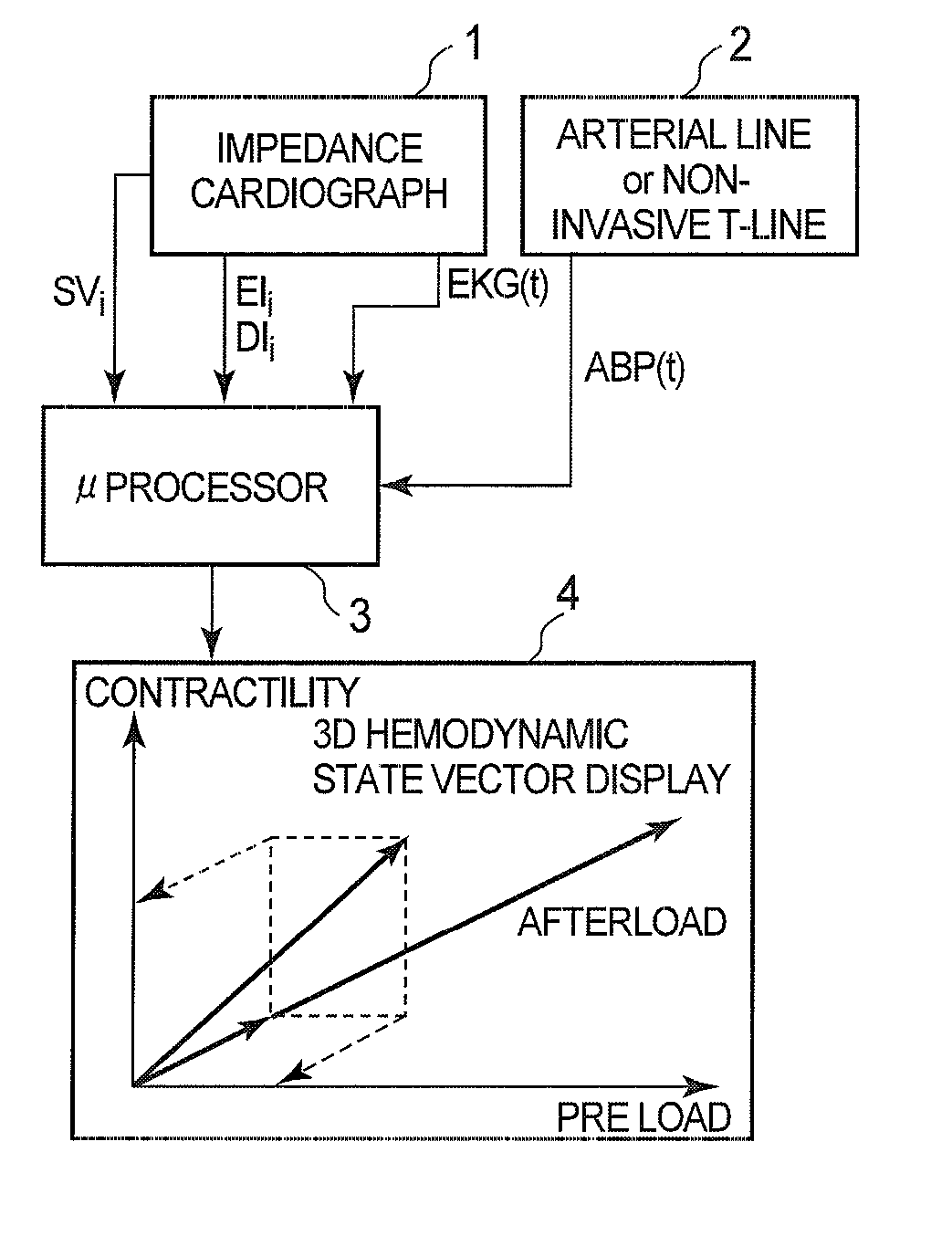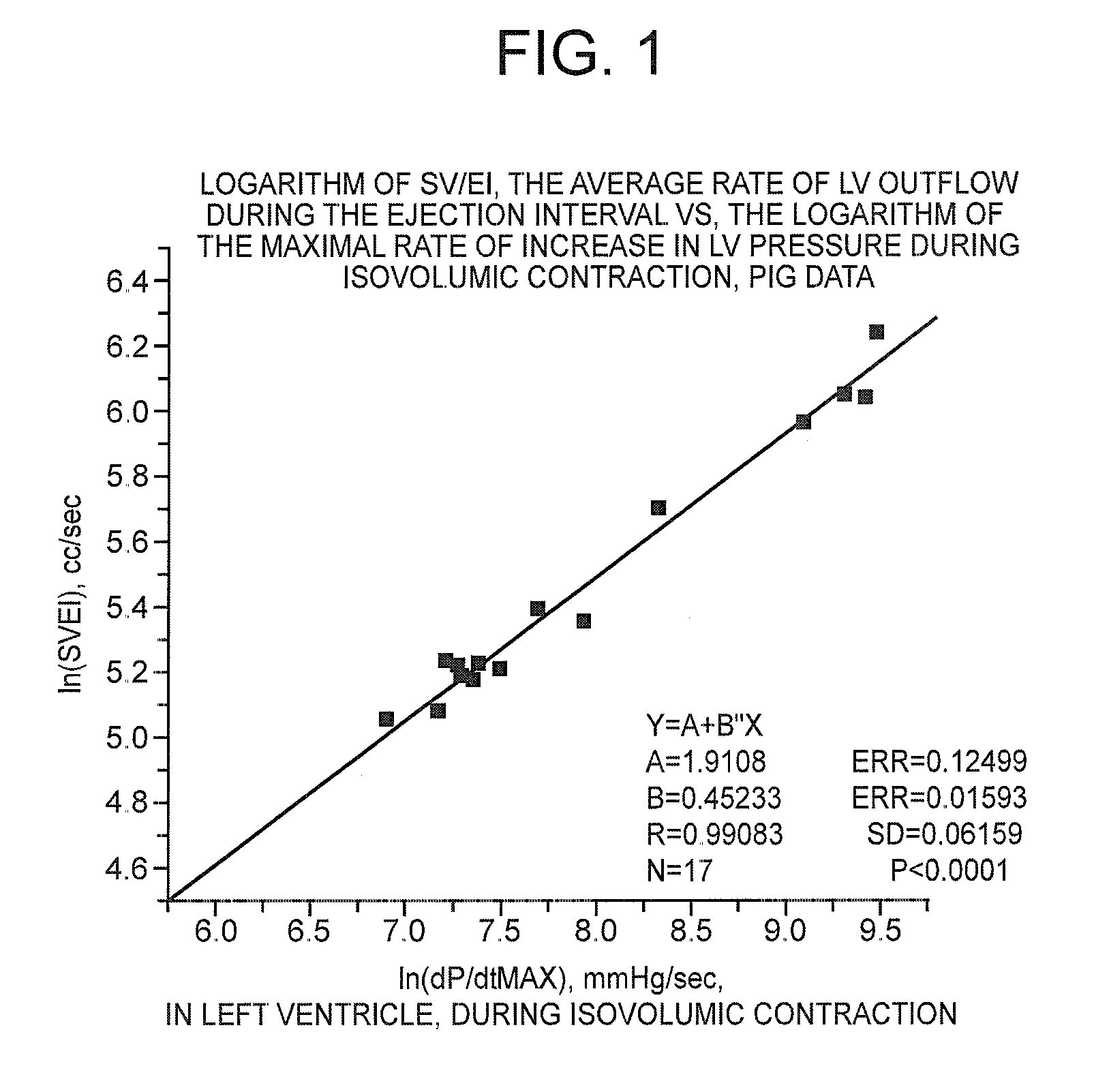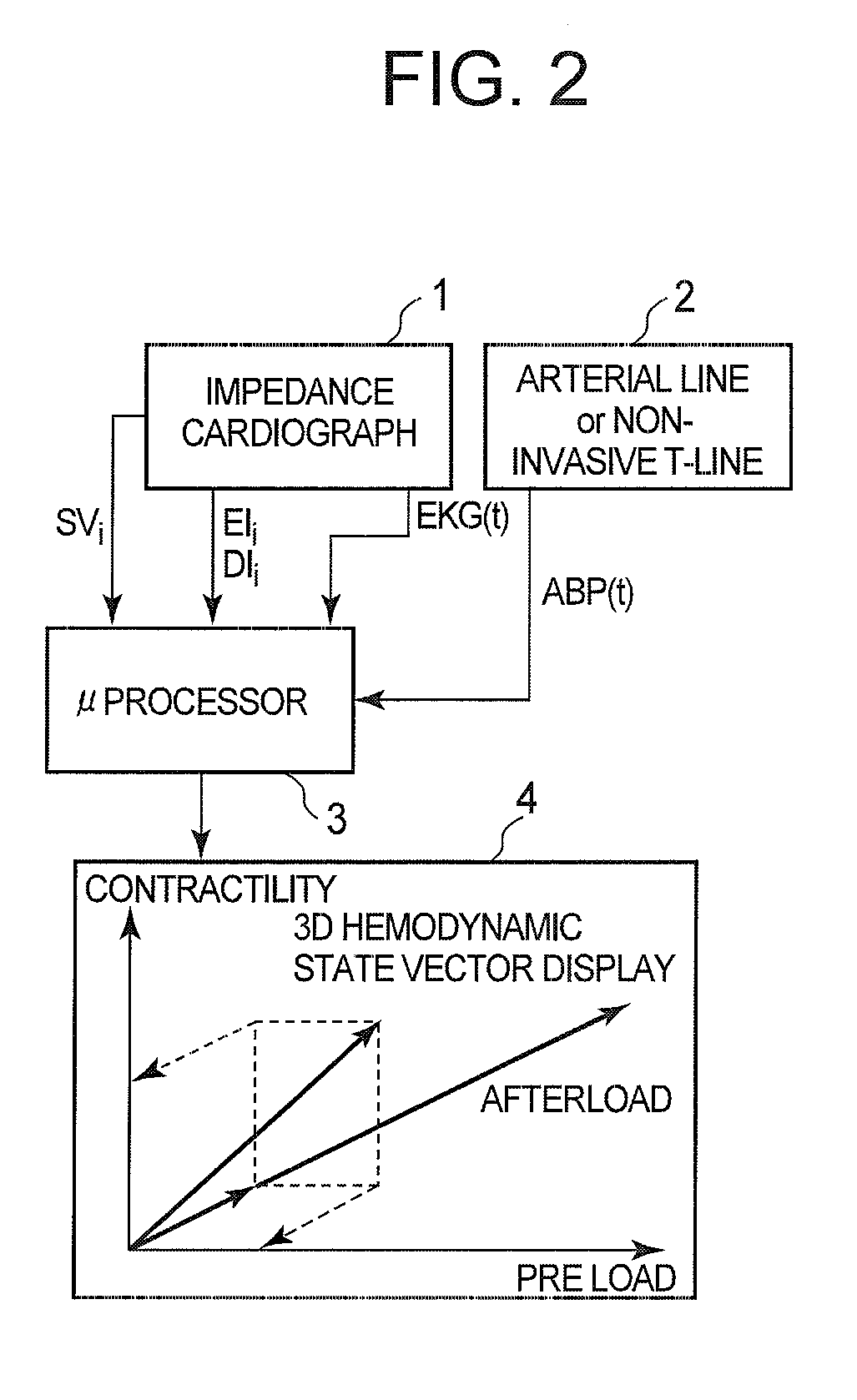Non-invasive method and device to monitor cardiac parameters without use of electrical-mechanical interval
a non-invasive method and cardiac parameter technology, applied in the field of alternative non-invasive methods and devices to monitor cardiac parameters, can solve the problems of e-m intervals that are difficult to standardize, problems such as the normalization of e-m, and the correction of e-m, so as to achieve convenient comparison and easy measurement
- Summary
- Abstract
- Description
- Claims
- Application Information
AI Technical Summary
Benefits of technology
Problems solved by technology
Method used
Image
Examples
Embodiment Construction
[0029] The disclosure of U.S. Pat. No. 7,054,679, which is a parent case, has been incorporated herein by external reference.
[0030] Equations 2 and 3 are empirical relations. Expressing equations (eqs.) 2 and 3 as a linear proportionality, we have
ln(dP / dtmax)α1 / (E-M) eq. 2′
exp(1 / (E-M))αSV / EI eq. 3′
Taking the natural logarithm of both sides of eq. 3′, we get
1 / (E-M)αln(SV / EI) eq. 4
But by relating to eq. 2′, 1 / (E-M)αln(dP / dtmax)
Since two quantities that are proportional to the same quantity are proportional to each other, we can write
ln(SV / EI)αln(dP / dtmax) eq. 5
Letting ‘B’ and ‘A’ represent the empirical coefficient and constant of linear proportionality respectively, we have,
ln(SV / EI)=B(ln(dP / dtmax))+A eq. 6
The right hand member of eq. 6 contains a quantity, dP / dtmax, which requires left ventricular catheterization to measure. The left hand side is now easily available with relatively little or no anatomic or physiologic trespass.
[0031] In U.S. Pat. 7,054,679, data from P...
PUM
 Login to View More
Login to View More Abstract
Description
Claims
Application Information
 Login to View More
Login to View More - R&D
- Intellectual Property
- Life Sciences
- Materials
- Tech Scout
- Unparalleled Data Quality
- Higher Quality Content
- 60% Fewer Hallucinations
Browse by: Latest US Patents, China's latest patents, Technical Efficacy Thesaurus, Application Domain, Technology Topic, Popular Technical Reports.
© 2025 PatSnap. All rights reserved.Legal|Privacy policy|Modern Slavery Act Transparency Statement|Sitemap|About US| Contact US: help@patsnap.com



